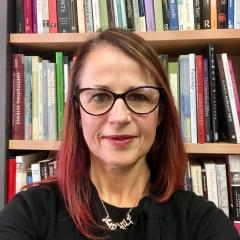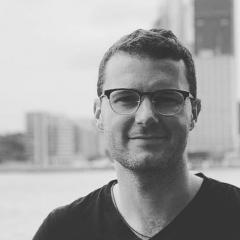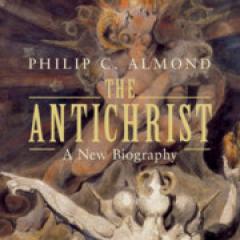 Associate Professor Elizabeth Stephens came to IASH in July 2017 as an ARC Future Fellow. Prior to joining IASH, Elizabeth was an Associate Professor in Cultural Studies in the School of Arts and Social Sciences at Southern Cross University.
Associate Professor Elizabeth Stephens came to IASH in July 2017 as an ARC Future Fellow. Prior to joining IASH, Elizabeth was an Associate Professor in Cultural Studies in the School of Arts and Social Sciences at Southern Cross University.
What are you working on at the moment?
My Future Fellowship project examines the history of experimentation and experimental practices as a site of collaboration between the arts and sciences. The space where the arts and sciences intersect is often an extremely productive one, this project shows, with a long history of generating new forms of knowledge, new concepts and practices, and new technologies.
My project examines collaboration between the arts and sciences through a wide range of case studies, which are drawn from the history of science, popular culture and visual arts. These include: the early scientific time-motion photographs that inspired avant-garde artists, inventors of moving image technologies, and early industrial managers alike; the public exhibitions of premature babies in the then-new technology of the incubator at Coney Island; the rise of laboratory-based art and the new areas of scientific research this is currently informing.
What I have found over the course of this research to date is that the concepts, practices and technologies developed at the intersection of the arts and sciences often come to have a widespread cultural effect, their influence extending across a broad range of cultural domains, but often in quite different ways from that intended. I’m interested to think about what that dynamic has to tell us about the experimentation, and about knowledge making practices that work collaboratively across the sciences and arts.
A recent talk I gave about this work for SSN Deakin can be viewed on YouTube.
How did you get interested in this topic?
My second book, Anatomy as Spectacle, showed how practical anatomy became a reputable branch of medicine during the mid-nineteenth century by staging anatomical exhibitions in sites of public exhibition. Such sites, which included World’s Fairs and commercial exhibition halls, were considered progressive and improving cultural spaces in the mid-1800s. The practice of anatomy, on the other hand, was associated with bodily desecration and grave robbing. So I became interested in the way changes in the popular sphere could drive and enable changes in the scientific sphere.
This is a line of investigation I am continuing in my current research for my Future Fellowship: the extent to which scientific and technological experimentation takes place in the popular and creative spheres, and the extent to which the histories of scientific and technological experimentation look different examined from this perspective.
Who/what have been the greatest influences on your own work?
I spent seven years, five of them full-time, co-researching and co-authoring my last book with fellow IASHian Peter Cryle, Normality: A Critical Genealogy. Having the opportunity to work so closely with a long-time mentor had an amazingly beneficial effect on my work. Peter is the consummate scholar: he never takes any shortcuts in his research, to the extent that I’ve seen him learn whole new languages to read particular texts. Working so closely with someone whose scholarly habits are so exemplary is very instructive!
The process of co-authoring improved my research and writing skills to such an extent I cannot imagine managing my current project without them. In particular, the methodology Peter and I developed to write Normality has been foundational to my current Future Fellowship project, in that it enables work that is both productively inter-disciplinary and rigorous in its scholarship.
How do you like to unwind when you’re not working?
It’s been a strange year for unwinding! Given we have all been forced to stay so close to home this year, it has been a fantastic time to get to know the country (Yuggera) Brisbane is in better. The Indigenous cultural tours offered in and around Brisbane have been a wonderful thing to explore during a time when movement is so restricted, and changed my experience of living in Brisbane.



